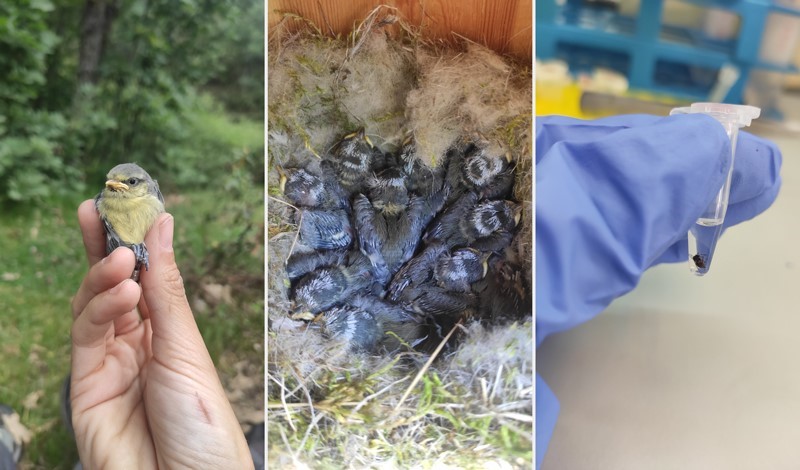El sexo y el comportamiento de las aves en el nido influyen en la probabilidad de que les piquen los insectos
Estos estudios ayudan a entender cómo se extienden las enfermedades infecciosas como la malaria.

Muchas enfermedades infecciosas se transmiten a través de insectos vectores que, mediante su picadura, transmiten la enfermedad a diferentes hospedadores. Saber cómo esos insectos eligen a los hospedadores puede ayudar a determinar cómo se extienden las enfermedades que transmiten a los animales silvestres. Eso es lo que ha determinado un equipo de investigación liderado por el Museo Nacional de Ciencias Naturales (MNCN-CSIC) y con participación de la Estación Biológica de Doñana (EBD-CSIC), que ha analizado a qué aves pican los insectos en una población de herrerillo común, Cyanistes caeruleus, situada en un robledal de Valsaín, Segovia. Los datos recabados, que por primera vez se han obtenido en nidos en condiciones naturales, muestran que son los machos más cercanos a la entrada del nido y de menor peso los que reciben más picaduras.
Durante 3 años, 2019, 2021 y 2022, el equipo identificó el sexo del ave picada analizando la sangre obtenida del abdomen de los insectos vectores capturados en los nidos. En 2021 los machos fueron picados con más frecuencia que las hembras, coincidiendo con que en ese año los machos pesaron menos que otros años. Además, el último año de estudio se llegó a identificar individualmente a qué polluelo picó cada insecto utilizando herramientas moleculares y genotipando el ADN, tanto de la sangre de la que se habían alimentado los insectos como la de las aves que estaban en el nido.
“A partir de estos análisis descubrimos que los polluelos más picados fueron los machos que pesaban menos y que se posicionaron más cerca de la entrada del nido. Esto puede deberse a que los insectos prefieren individuos en peor estado corporal ya que sus defensas son más bajas, y a que los polluelos más hambrientos pueden estar más expuestos a las picaduras, ya que se acercan más a la entrada del nido para pedir alimento”, explica Marina García del Río, investigadora del Museo Nacional de Ciencias Naturales.
Estos resultados, publicados en la revista Molecular Ecology, ayudan a entender cómo los insectos vectores eligen a sus hospedadores, aportando información para entender la transmisión de enfermedades infecciosas como la malaria aviar. “Tener información sobre las diferencias encontradas en infecciones entre machos y hembras en la vida silvestre, puede ayudarnos a entender las implicaciones en estudios sobre picaduras en humanos, ya que se ha visto en estudios anteriores que existen factores, como por ejemplo el grupo sanguíneo, que afectan a la probabilidad de ser picado por mosquitos”, apunta García del Río.
En esta investigación también han participado la Universidad Complutense de Madrid (UCM), la Universidad de Alcalá de Henares, y el Centro de Investigación Biomédica en Red (CIBER).
Referencia:
Marina García-del Río, Francisco Castaño-Vázquez, Javier Martínez, Josué Martínez-de la Puente, Alejandro Cantarero, Javier García-Velasco, Yago Merino y Santiago Merino (2024) Nestling sex and behaviour determine the host preference of insect vectors in avian nests Molecular Ecology, 33, e17517. DOI: https://doi.org/10.1111/mec.17517